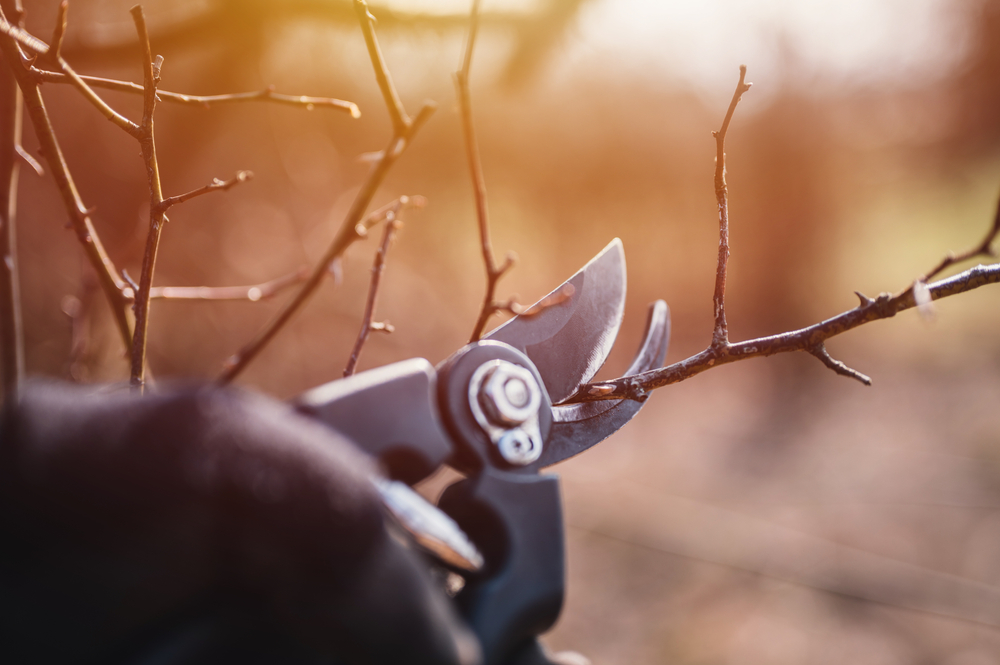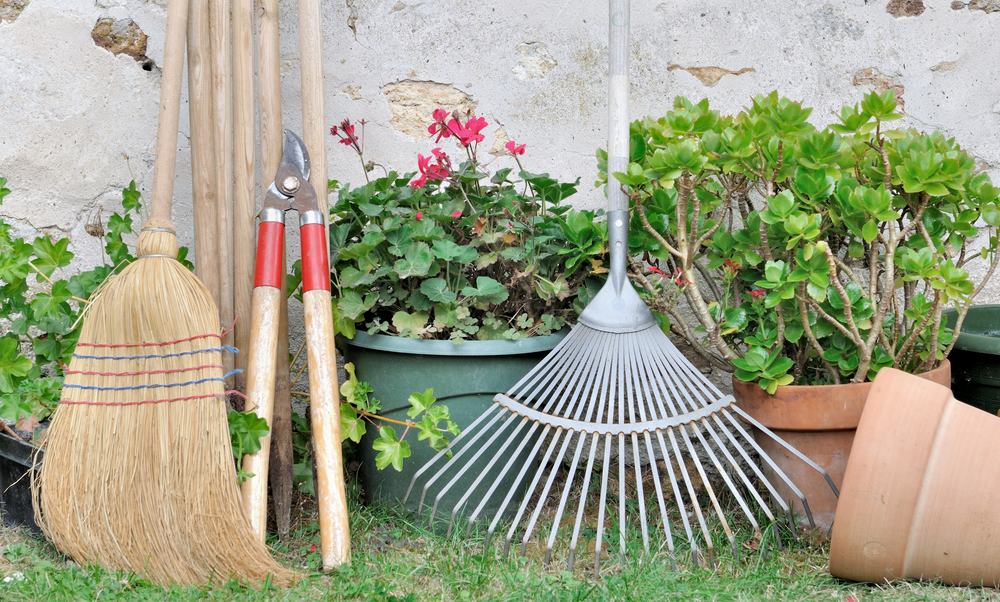Essential gardening tools for every garden
Do you have a garden or a small patch of greenery? Maintenance is key. But what tools do you need to tackle the most common tasks? Here's an overview of the essential gardening tools that should not be missing:
Spade
The classic spade is an indispensable tool in any garden. You can use it to dig the soil, scoop earth from a wheelbarrow, and of course, dig holes for planting new crops. Choose a spade that suits your stature and the size of your garden. For a small front garden, a large, heavy spade is unnecessary.
Tip: Be careful when digging near tree roots, especially for young trees. Damaging the roots can reduce the tree's chances of survival.
Secateurs
Secateurs are perhaps the most commonly used gardening tool. Make sure you use single-handed secateurs, not the larger hedge shears. Secateurs are essential for maintaining shrubs, especially roses and bushes that require regular pruning. Always opt for secateurs with blades that slide past each other, like regular scissors, to ensure branches are properly cut.
Tip: Remove dead roses (hips) to make room for new roses the following season.

Hedge shears
If you have a hedge, hedge shears are essential for keeping it in shape. They are specifically designed for this purpose. If you don't have a traditional hedge, this tool is not necessary.
Tip: Hedge shears are only useful for hedges, whether for straight cutting or shaping into a ball or other shape.
Hoe
A hoe is necessary for turning and aerating the soil, as well as for removing weeds. Just place the blade on the ground and make short movements. Be careful not to get too close to the stems of young plants, as damaging them is bad for the plant. Avoid hoeing deeply near plants and trees you want to preserve to prevent root damage.
Tip: Never lay a hoe (or any other gardening tool) flat. You risk cartoonishly hitting yourself on the head if you step on it.
Broom
A broom is also an essential gardening tool, especially if you have a partially tiled garden, patio, driveway, etc. It always comes in handy for sweeping away leaves, as well as for cleaning up after gardening and carrying garden waste.
Tip: Consider the characteristic street sweeper's broom. It's a simple but effective tool: a bundle of branches tied to the end of a handle. You can sweep it sideways to clear debris away from your feet. Very practical for sand and other small debris.

Rake
There are different types and sizes of rakes. You have the rake with the steel and rigid pointed 'teeth' at the end. This is ideal for opening up soil or removing larger clumps of weeds. The leaf rake has a flexible 'fan' at the end of the handle. Avoid plastic versions, unless you use them very sporadically. Steel rakes are not only sturdier, but they also last longer. The leaf rake comes in handy in autumn; you can use it to gather fallen leaves into a pile. Also practical if you have blossom trees in the garden: all the fallen blossom disappears in no time.
Tip: For larger gardens, you'll need both the regular rake and the leaf rake. For the early stages, the leaf rake will suffice.
Gloves
Although there's nothing wrong with getting your hands dirty in the soil, there's always a risk of injury. A piece of glass or a rusty nail can cause trouble. Also, working with 'prickly' plants like roses, brambles, etc., can result in scratches. Gardening gloves protect you from these to a large extent. Plus, they keep your hands clean. Last but not least: there is also weed that produces irritating sap when cut or touched. Again, gloves protect against this.
Tip: Choose well-fitting gloves made of sturdy material. Ill-fitting gloves are uncomfortable for prolonged use; poor-quality gloves provide insufficient protection.
Lawn mower
A lawn mower is essential for maintaining lawns. For small gardens, a hand mower is sufficient, while for larger lawns, an electric mower is practical.
Tip: Consider an electric strimmer for very small gardens. This tool quickly rotates a plastic cord at the end of the handle; it cuts the grass. Also handy for borders.
Small hand tools
Small hand tools can come in handy for those whose garden mainly consists of flower pots. Think of a balcony garden, but also a small partly tiled front garden with some soil here and there. With a hand trowel, you can plant small plants, bulbs, etc.: dig a hole and you're done. There are also hand rakes and bulb planters. The downside of this hand tool is that you mostly use it sitting on your knees, a rubber mat or knee protectors to protect your knees is also no luxury when using hand tools.
Tip: With the bulb planter, you make holes at precisely the desired depth. Put the bulb in, cover it, and you're done. Handy if you're planting a lot of bulbs.
Watering can or hose?
The well-known watering can is almost indispensable, especially in the summer months. It's particularly essential for owners of small (front) gardens and the like. The disadvantage of the watering can is that it's quite heavy when filled. If you have a larger garden or lack the strength for a watering can, a hose comes in handy. For smaller gardens, you can connect it via a coupling to a tap in the garden or WC in the house. For a larger (back) garden, you can opt for an external water tap, which a plumber can always install. In that case, be sure to remember to drain and close it before winter to prevent damage to pipes and taps. The hose is also ideal for cleaning your balcony or terrace. However, first check if there's a good (and unblocked) drainage system in place.
Tip: Once you have a hose, you can attach a sprinkler to it. Ideal for dry summer months. Remember to water in the evening, never during the day in bright sunlight.
